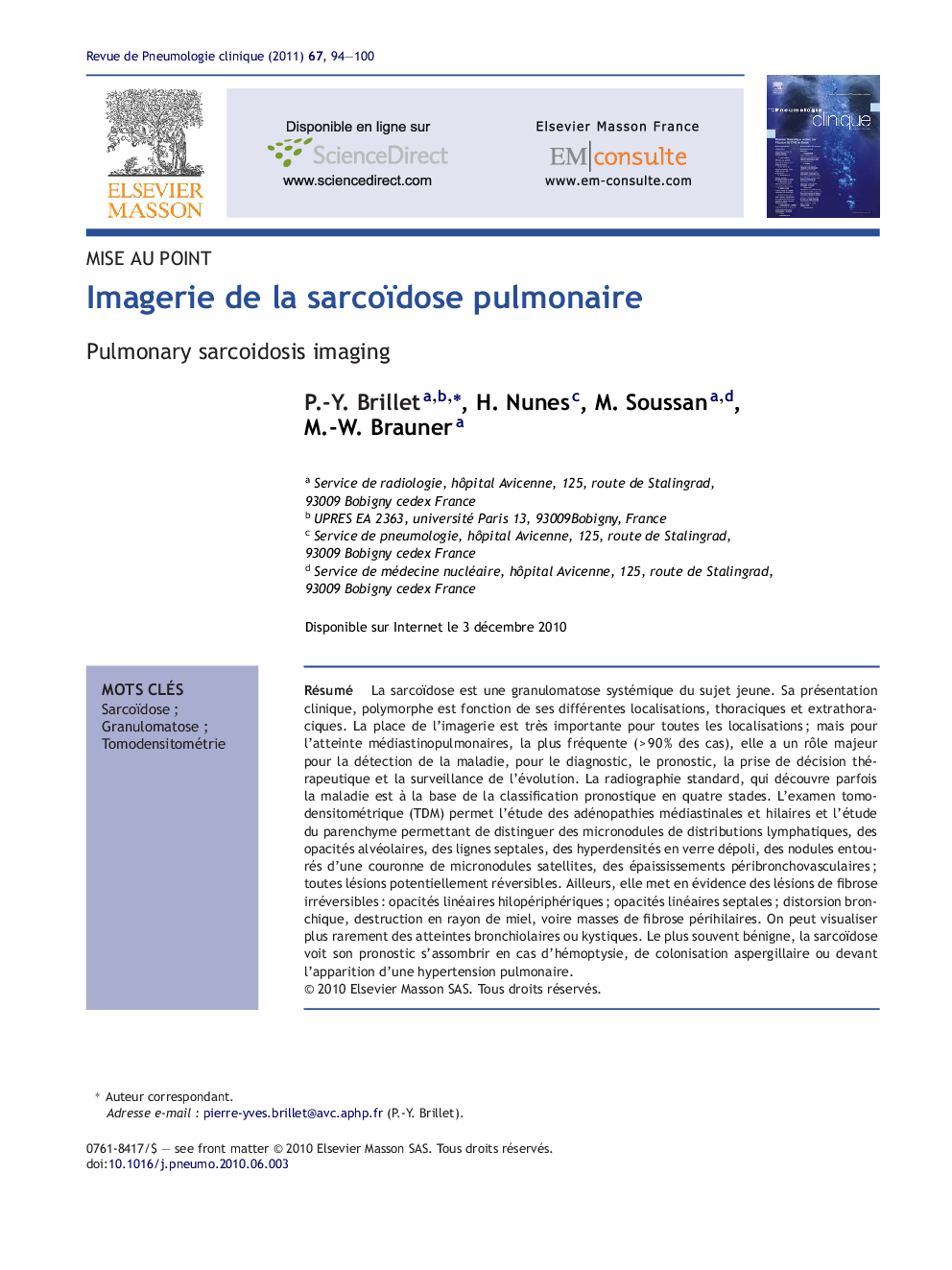| Article ID | Journal | Published Year | Pages | File Type |
|---|---|---|---|---|
| 3419758 | Revue de Pneumologie Clinique | 2011 | 7 Pages |
Abstract
Sarcoidosis is a juvenile systemic granulomatosis. Its polymorphic clinical presentation depends on its different localisations, thoracic and extrathoracic. The role of imaging is very important for all localisations; but for mediastinopulmonary involvement, which is the most frequent (>Â 90% of cases), it plays a major role in detecting the disease, diagnosing it, its prognosis, decision-making regarding treatment of it and in the monitoring of its development. Standard radiography, which sometimes detects the disease, forms the basis for its four-stage prognostic classification. CT scanning enables the study of mediastinal and hilar lymphadenopathy and the study of parenchyma, making it possible to identify micronodules of lymphatic distributions, alveolar opacities, septal lines, ground-glass hyperintensities, nodules surrounded by a ring of satellite micronodules, peribronchovascular thickening; all potentially reversible lesions. Elsewhere, it highlights irreversible fibrous lesions: hilar peripheral linear opacities; septal linear opacities; bronchial distortion, honeycomb destruction or even perihilar fibrotic masses. Less frequently we can visualise bronchiolar or cystic involvement. Benign in most cases, the sarcoidosis prognosis becomes bleaker in the event of hemoptysis, Aspergillus colonisation or before the onset of pulmonary hypertension.
Related Topics
Health Sciences
Medicine and Dentistry
Infectious Diseases
Authors
P.-Y. Brillet, H. Nunes, M. Soussan, M.-W. Brauner,
